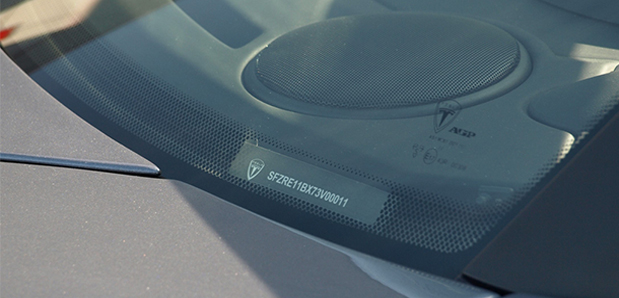
VIN in Renault is very important for every owners of Renault vehicles. Chassis number contain history of vehicle and main information, the most important is checking if car is not stolen!.
Nowadays the most popular are four standards of VIN:
- FMVSS 115, Part 565: Used in United States and Canada
- ISO Standard 3779: Used in Europe and many other parts of the world
- SAE J853: Very similar to the ISO standard
- ADR 61/2 used in Australia
VIN Number Renault should be permanently placed on chassis or on bodywork, on the right side of car in a prominent place. Identification of Vehicle is the first step which diagnostician is checking on vehicle during technical inspection. It is the one of the most important parts of inspection. The most popular VIN Renault places are: on bulkhead, next to fender, on the floor next to or under passenger seat, in trunk next to spare wheel, next to steering wheel, on the front of car frame, under rear wheel well and others.
Answer on question where is VIN Renault? is difficult but the easiest solution is use our vin location tool, which let you on locate vin number on your vehicle in a few seconds. It is totally free!
Check where the VIN is at Renault – enter the body number
Remember that before you buy, check the history of the vehicle. You do this by typing the VIN Number Renault below:
The report is an indispensable aid in checking a used Renault. The information it contains constitutes a basic compilation of data necessary to know its history. All the information contained in the report is an indispensable element of checking the car. We invite you to get acquainted with the scope of information available on the autoDNA report.
-
- Checking stolen vehicle databases
- Technical vehicle data
- Information on previous odometer readings
- Information on possible collisions and accidents
- Archived photographs of the vehicle
- Vehicle destination
- Factory defects of the vehicle
VIN number – what is it?
The VIN, or Vehicle Indentification Number, is a unique vehicle identification number that contains numerous and important pieces of information about a car. The VIN contains information such as country of manufacture, year of manufacture, type of drive, engine version, equipment options, among others.
VIN numbers were first used in 1954 in the United States. Car manufacturers such as Renault had already been marking their cars in this way. Manufacturers in Europe also began to use this type of designation. However, the first numbers looked very different. It was not until the 1980s (in 1981 to be precise) that the world’s manufacturers, together with manufacturers in the USA, came to an agreement on this matter.
In 1981, the National Highway Traffic Safety Administration in the USA standardised the format. Cars sold should contain a 17-character VIN number that does not contain the letters I (I), O (o) or P (q) (to avoid confusion with the numbers 1 and 0).
A common standard has therefore been developed to facilitate the work of the police, insurance companies and used car dealers. From now on, the VIN of each car consists of 17 characters – letters and numbers.


 EN
EN  PL
PL  RU
RU  DE
DE  HU
HU  EE
EE  LV
LV  RO
RO  SI
SI  CZ
CZ  LT
LT 